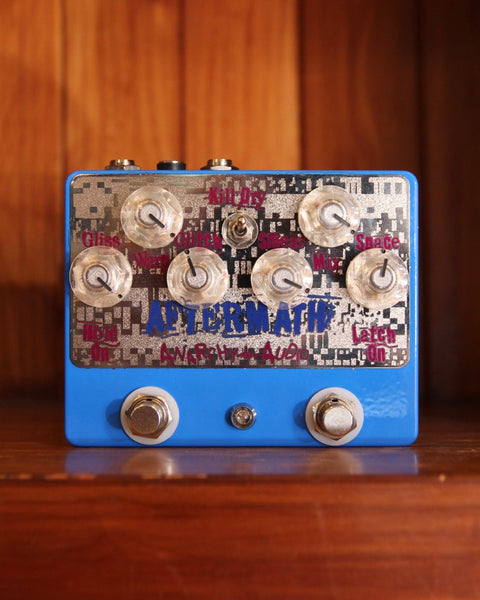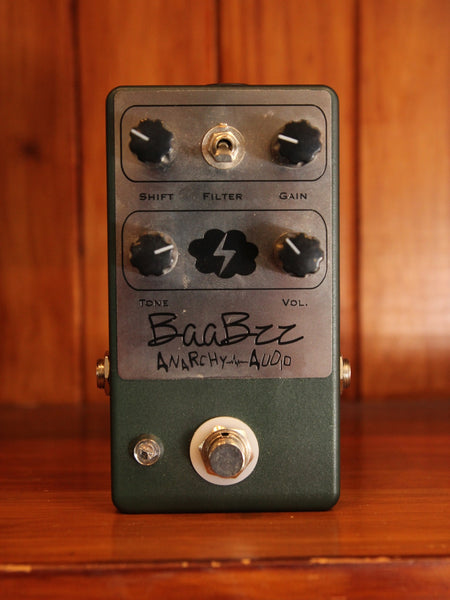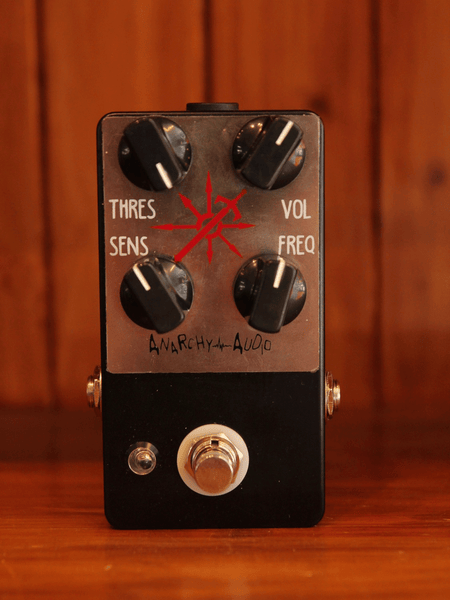The Aurora is an analog bucket-brigade flanger that gives you a powerful 5-mode modulation bus with 2 LFOs, 2 tape emulations, and a static comb filter. This provides several shades of flange, vibatro, chorus, phase, and filtery spatial effects with the lush sound of an analog signal path. The inclusion of a dedicated wet/dry MIX control gives you acute tonal control, while manually actuated TAPE modulation, and interruptible LFOs open up new avenues of in-the-moment expressiveness. Let your imagination coast across the neon sky.
Effects Spaceman Aurora Analog Flanger Pedal
- Online Layby
- Local Pickup
- Trusted Store
- Worldwide Shipping
- Serviced and Setup
- Layby deposit
- Layby this product by using the code LAYBY on checkout. Read our LayBy agreement.
- Delivery
- Standard shipping or pick up in store
Bathe your tone in the iridescent glow of primordial bliss, while waves of smooth sonic neon sweep you into another realm of creative inspiration. The Aurora is an analog BBD flanger featuring an unparalleled level of custom waveform animation with a hypnotic and lustrous tone. Thoughtful control options make it easy to achieve a variety of flange, vibratro, lush chorus, phase, and filtery spatial effects, all primed for stretching and collapsing the acoustic vortex. The Aurora also marks an exciting expansion of Spaceman’s Standard Edition line with the introduction of colorways. Plug into Aurora and slip into the ephemeral night.
INTRODUCING AURORA
THE MODULATION STATION
The modulation bus of the Aurora consists of three types of modulation: Two LFO modes, two tape modes, and one unswept comb filtering mode. Add shimmer and movement with shallower WIDTH and MIX settings. Crank up the REGEN, WIDTH, and RANGE and careen into deep rhythmic sweeps.
The LFO 1 mode produces a triangle waveshape ideal for a traditional flanger effect at lower speeds and lush chorus and phasing sounds at moderate speeds. At higher LFO speeds, set your MIX to fully wet and spin up bizarre seasick pitch-shifting vibrato. The LFO 2 mode offers discrete control over the rise and fall times, allowing you to craft ramp up, triangle, and ramp down waveforms. The ability to control the LFO slopes independently makes for very interesting asymmetrical modulation especially useful for flange and pitch-shifting settings. A quick tap of the TRIG footswitch resets the LFO to the bottom, and holding the TRIG switch holds the LFO low.
The TAPE modes of the Aurora give you the ability to mimic the tape deck manipulation of early flange effects. Just like placing your finger on the flange of a tape deck, holding the TRIG footswitch down begins the upward sweep, and releasing the TRIG footswitch begins the downward sweep. Careful use of the REGEN, WIDTH and MIX controls can tame or exaggerate the effect to suit any application.
Lastly, the COMB mode freezes the modulation, and uses the RATE & RANGE controls to set two different static delay times that can be switched between by using the TRIG footswitch. The comb filtering effect can be used in a variety of ways, from simple thickening, to exotic, chaotic, robotic clang.
THE AURORA PROVIDES YOU WITH:
- Brilliant clarity through a noise-reducing compander, and filters with a carefully tuned frequency response.
- A dedicated 100% wet / dry MIX control.
- Traditional AND unique multi-slope controls via two LFO modes.
- Emulation of your finger on the flange of a tape deck via 2 TAPE modes.
- Create subtle to not-so subtle Haas spatial effects with the static COMB filter.
- Maximum delay path headroom via a 256-stage MN3009 delay chip.
- Slowest sweep: > 60s
- Wide sweep ratio: > 20:1
- Delay time: 0.35ms-8ms





